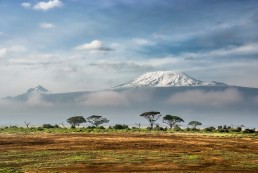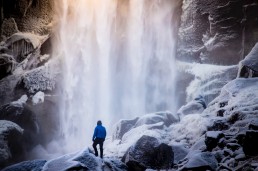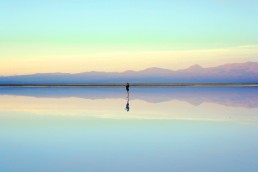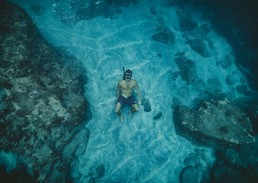Destination Guide - Venice
To many travelers, Venice is a dream destination known for being unique and romantic. There is so much to see and experience, and here are just a few prime examples of what can make your visit an extremely memorable part of your vacation.
Canal Grande
Everyone wants to experience gliding on an authentic and serenaded traditional Venetian gondola ride on these famous “liquid streets” that comprise the city's main water thoroughfare. You are taken past magestic Renaissance palaces, beautifully colored gardens, elaborate churches, and other landmarks.
St Mark's Basilica
This is Venice's most famous cathedral, is one of the finest examples of the opulent Italo-Byzantine architecture style, and contains valuable art, metalwork, and other treasures. Originally built in 832, by the time of the 11th century, it was going by the nickname “Church of Gold”.
There are 85,000 square feet of mosaics that show scenes from the Old Testament and the New Testament. The four bronze horses were created around the 4th century BC in Constantinople and were plundered during the Fourth Crusade and were placed in front of St. Mark’s in 1254. The ones you see are replicas that were installed in the 1980s due to air pollution that was doing damage to the original ones that are still inside St. Mark’s Museum.
Doge's Palace
The palace is over 1,100 years old. An architectural masterpiece with its elaborate exterior, rococo interior, and grand halls, it was the residence of the Doge, the "Duke" of Venice. Italy's greatest architects added to it as the city grew, and it has been a museum since 1923 with priceless paintings by Venetian masters.
The Bridge of Sighs is a symbol of love. It is best to go there on a gondola because it is said that if a couple kisses at sunset as they pass under the bridge and hear the bells of St. Mark's tolling, their love is sure to last forever!
Walking Tours
They are very popular and allow you to see numerous sights first-hand. If you want to take one that is unusual, consider a Ghost Tour! You get to explore the city's mysterious past and go through abandoned piazzas and ancient passageways while your guide tells ghost stories and legends as you see the spookier side of Venice.
Australia's Hidden River Gem
The Daintree River is located roughly 100 kilometers north of Cairns in far north Queensland. It is one of those hidden holiday destinations that most people don’t wont the world to know about. While Australia is famous for its fabulous beaches, coral reefs and red center, it is also home to some of the most diverse, and prehistoric, rain forests on earth.
In the Daintree region you can find both plant and animal life that dates back thousands of years, many of which are reaching a point of extinction with the rain forest their last known habitat. The Daintree River itself is a natural border that sits between 21st century man, and prehistoric times. In fact, there isn’t even a man made bridge that crosses this rain forest river. The only way to gain access to the Daintree rain forests is by vehicle ferry – but it’s certainly worth the trip.
You have two options. You can take a leisurely day trip from Cairns or Port Douglas. Visit the river and many of the sites; take in a river cruise and possibly catch site of some of the saltwater crocodiles that inhabit the region, or you can plan to stay awhile and really explore the region.
Daintree RiverThere is plenty to see in the area between the Daintree River crossing and Cape Tribulation – another hours drive north. Areas such as Cow Bay, Coconut Beach and the Cape Tribulation lookout are all worth visiting. You can dine at the Cafe by the Sea; visit the Insect Museum; or perhaps do a taste test at the Daintree Ice-Cream Company – said to be the best ice-cream north of the Daintree (hang on, it’s the only ice-cream north of the Daintree).
There are plenty of tourist lodges and resorts to stay in, or you take your own caravan – there are plenty of camping places available, all with great services to for an area so remote.
If you are looking for a holiday that’s different, consider the Daintree River and the rainforest national park to the north. You can spend a week exploring this region and never get bored. Check out the video on the Daintree River Wild Life Cruise.
Destination Guide - Kenya
Kenya is a beautiful country located on the East Coast of Africa. Her flora and fauna are quite breathtaking and ideal for a vacation during the Summer holidays.
The 'Big Five' as popularly known, exist in the various game parks including, the Nairobi national park and the Masai Mara. Wildlife comprise of the Rhino, the Lion, the Elephant, the Buffalo and the Giraffe. This guarantees the tourists' sense of sight is occupied for the better part of the nature trail.
Kenya consists of magnificent mountains, including, Mount Kenya in the highlands region. The Indian ocean to the east gazes over the warm sandy beaches. Without a doubt, there is much more to adventure in this awesome country, plenty to satisfy one's hunger for a memorable vacation.
The most popular city for vacation is the coastal city of Mombasa, located to the Southeast of the capital city of Nairobi. Tourists from all over the world prefer the coastal city due to its humid climate and the refreshing beaches.
To the North and South of Mombasa, accommodation in top-rated hotels is readily available on first-come, first served basis or by early booking especially during the high seasons of Christmas and Easter holidays.
To the North of Mombasa there exists, Neptune beach hotel, Travellers beach hotel, Bamburi beach hotel, Nyali beach hotel. To the South, accommodation is available at Two fishes beach hotel, Nomad beach hotel, Diani sea lodge, among others. Rates for accommodation adjacent to the salty waters are quite affordable ranging from $50 to $150 full board per person, per night. This however, depends on the season. Rates increase during high season and decrease during low season.
In summary, one can never go wrong in choosing Kenya as their preferred vacation hub. Tourists are always appreciated and given the courtesy they deserve.
As the locals always say in Swahili language, in Kenya, 'Hakuna Matata' meaning, 'There is no worry!'.
Yosemite National Park - Do It Now
Travel builds character. It defines who you are as a person. Being able to withstand rocky terrain physically and metaphorically shapes your decision making skills. It gives you confidence in your ability to navigate life. That’s why there’s no better time to travel than in your 20s. At what other age do you get to be gloriously selfish and adventurous?
There’s a quote by musician Henry Rollins that strikes a chord with young people. It urges them to get a passport, take a summer, and see other parts of the world. If you’re American, you may be unable to travel outside the country at first. That’s ok, there’s a world of adventure to be had in the U.S.A. You can start there and get the passport later.
Why Yosemite?
Yosemite National Park is a backpacker’s paradise. Stretching nearly 1,200 miles, it’s an outdoor treasure trove filled with natural beauty, photo opportunities, and experiences like none you’ve had before in your life. First protected in 1864, Yosemite sees its fair share of visitors each year and for good reason. Known for its breathtaking waterfalls, giant sequoias, and deep valleys, the Californian National Park offers the perfect setting for your first backpacking adventure.
Here are five reasons why backpacking in Yosemite National Park in your 20s is ideal:
• Over 95% of the land is designated Wilderness. What better way to experience the Great Outdoors than sleeping in the wild? In order to do so, you’ll need a wilderness permit. It’s free but in great demand so reserving one is highly recommended. The cost is $5 per confirmed reservation plus $5 per person if traveling in a group. Half Dome permits are now $8 per person. It’s a small price to pay for lodging on any trip you take.
• You’ll eat well and inexpensively. Running low on provisions is unheard of in Yosemite. In fact, stocking up on the foods you love and fuel your body while backpacking is easy. There are a number of places to buy food. The Village Store, the Ahwanee Sweet Shop, and Housekeeping Camp General Store are open during business hours as a convenience for visitors to the park. Purchase your favorite backpacking foods and enjoy them in one of the many picnic areas throughout Yosemite. You’re young so you know what it’s like to eat on a budget. Word to the wise: Don’t leave any scraps behind or you’ll attract bears at your campsite.
• You’ll gain a better understanding of what’s important in life. Void of many modern technologies, you’ll gain a healthy appreciation for the planet and its natural resources. You’ll see rock formations where glacier water slowly carved their surfaces for a period of over 3,000 years. You’ll stand beside ancient sequoias in Mariposa Grove and realize their significance for the first time. Rather than be distracted by electronic gadget, your focus is on the scenery ahead of you and the way it makes you feel. Make sure to document your experience with a digital camera (pack lots of batteries), a journal, and the writing tool of your choice. You won’t want to forget a moment spent in Yosemite. Cheryl Strayed built a career out of a solo hike down the Pacific Crest Trail.
• You’ll learn that earning a living and making a life for yourself are two very different things. Employment opportunities exist with or without you. It’s better to travel while you’re young, debt-free, and childless. Many people are under the assumption that entering the working world straight out of college is advantageous. They forget how hard it is to request time off. Money is almost always a factor. Once a person gets used to a certain type of lifestyle, they need a way to financially support themselves. Before buying a house, new car or designer suit, consider the value of a backpacking adventure. You’re likely to learn more than you did as a student, and this time around, your education is free.
• You’ll enjoy a variety of adventures that excite and amaze you. Yosemite offers plenty to do year round. Among the different activities promoted by the park is art and photography, auto touring, biking, birdwatching, camping, fishing, hiking, horseback riding & stock use, picnicking, ranger and interpretive programs, rock climbing, tours, volunteering, water activities, and winter sports. You could honestly choose a different activity every day and still not do everything you set out to do in the park. Part of growing as a person is challenging yourself to try new activities. Fire up the neurons in your brain by stepping out of your comfort zone.
There are a number of compelling reasons to pack a rucksack and visit Yosemite. If anything, do it because you’re young and you can. You won’t regret the experience you have. In fact, you’ll create memories that you carry with you throughout your lifetime because of your adventure.
Documenting Your Travels
An important part of travel that is far too often overlooked is documenting the memories you make.
It's instinctual for most of us to document our time traveling with photographs, but what happens to them once we're home? All too often mine sit on a memory card only to be forgotten until the next trip comes along.
Social media has helped, in the sense that we are now good and trained at uploading memories instantaneously. These aren't comprehensive memory safe's though, only showing a day or a moment where in years to come you'll wish you remembered more than a selfie and a smart caption.
My favourite way is journaling and I find it's a relatively easy habit to get yourself into when you're traveling, much easier than when at home. I make sure to take time each day to write, even just in list form, where we went and what we saw. For the wordsmiths amongst us you may like to write a more comprehensive account, but you'll be amazed at how much memory recall you can have from even just reading the name of a place or cafe you visited.
If printing out photos isn't your thing, I'd highly recommend picking your favourite photos as you go and then having them printed into a book when you get home. We only started doing this recently, and I'm trying to organise myself into doing the same for some old trips too - there are loads of companies online that will bind your memories together and send you a gorgeous coffee table book of your adventure. This is great for showing friends and family as well as being a precious keepsake for yourself.
Traveling Alone
Solo travel can be one of the most invigorating experiences, and be one of the best investments you can make in yourself. I’ve spent quite a substantial amount of time on my own on the road, and it certainly presents its own challenges but the rewards far surpass these.
My first piece of advice when traveling alone is to have a pretty rigorous plan. This will help keep you safe because you can let people know where you are at all times, but it also means that you always have somewhere to look forward. A risk when traveling alone is that you’re less motivated to get out and see things, having a plan will mean that there’s always something to do, and you won’t feel you lack someone else pulling you around or suggesting locations to see.
Having said that, a great benefit of traveling alone for me has been the time for self-reflection and really appreciating and taking in where I am at any given moment. Not having someone to be distracted by means I notice more of what I’m seeing, and appreciate things in a different way. I find that I immerse myself in a local culture or environment much better when I don’t have anyone else to be concerned about or social with.
You meet people much easier in places like hostels when you’re traveling alone as well. People are more likely to include you in their social circles when it looks as though you’re there on your own – one of the great benefits of hostel culture.
A lot of the safety concerns on traveling alone, particularly if you’re female, go without saying, so I won’t get into them here. Just be cautious and don’t step too far out of your comfort zone when you’re alone.
Otherwise, I’d say make sure you journal and take lots of selfies of you in all the great places you travel to!
Getting The Most Out Of Your Economy Seat
Flying economy can be a smart way of traveling and getting the most of your money. Spending less on getting to your destination gives you more to play with when you arrive. Economy seats can be a tight squeeze though, and particularly on long haul flights they can be uncomfortable and arduous. We’ve perfected the art of economy travel though, and here are our top pieces of advice for surviving small spaces at 39,000 feet.
Giving yourself plenty to do on the plane is a must. If your mind is occupied then you’re less likely to sit there being annoyed that you don’t have very much personal space. I always make sure that I have back up films or television shows, because if you rely on the in-flight entertainment you might not always find something you’re particularly interested in. If you’re someone who can’t read with noise going on around you (as I am) then books usually aren’t a good option on a flight. Find something that will keep you engaged and pass the time faster for you.
Get up and move frequently. This can be easier or harder depending on whether you have an isle spot or not. If you keep your muscles and body comfortable and mobile, the jittery bored feelings will remain at bay for longer. Making sure that you’re moving around enough in a flight is an excellent way of breaking it down as well, if you set a goal to get up and move around at least once and hour they’ll tick down much faster!
Relax. Which can be hard when you feel like there are a hundred other people too close to you. But finding ways to tune out of the environment as best you can you’ll find is the only way to survive with your sanity in tact.
Remember that as soon as you arrive at your destination you will have forgotten about the discomfort of getting there very quickly.
What To Pack In Carry On
Packing your carry on can feel very high pressure as you do it, the choices that you make at home can dictate how comfortable and enjoyable your flight is. We’ve all made errors of judgement and packed things we didn’t need or forgotten those we did.
I’ve got a few fail-safe ways of remembering what I’ll need during the flight and prioritising what will get a coveted spot in the few kgs of baggage allowance that walk onto the plane with me;
- Be ruthless. There’s no room for packing ‘maybe’ items. Make sure what you’re bringing with you is something that you’ll actually use. I’ve learned not to bring my laptop on the plane anymore – I can watch TV on the seat screen and any reading/work I tell myself I’ll do on a flight I very rarely actually will. It’s a waste of weight and a waste of worrying about it getting thrown around too much! Wrap it in a good case and a jumper and keep it in your checked in luggage.
- Don’t overshoot it. Sometimes I think I need a dozen different thing to do on a flight, I get caught up in thinking it’s a super long time. Often times a long flight isn’t as long as you think, it gets broken up by sleeping and meals getting served. Once you’ve watched movie you’ll find you don’t need three books to read. Be conservative in how entertained you think you will need to be.
- R E L A X. Seriously. You don’t need to be busy on a flight. Sometimes we’re on the way to a holiday, and sometimes it’s for business. But when in the air it’s a perfect opportunity to take to relax. You’re unplugged, and you have a chance to not be a slave to your phone or the constant pull that everything gives for your attention.
Tips For Amateur Divers
We've gotten some question lately about how we first got into diving and how we choose places to dive now. The two are quite separate questions! So I'm going to deal with the first one now, and the second in another post. Getting into diving was a natural progression for us from snorkling any and everywhere we could. Here are 3 tips for how to make the progression into the bigs leagues!
- Get a buddy. I'm sure you can do this all by yourself, but it was super helpful having each other while getting certified and for moral support on the first few serious dives. Having someone else who's learning too I thought made me relax into the process more.
- Stay safe. Safety is huge even for the most experienced divers, but at the beginning it's especially important to er on the side of caution. You might feel you're a confident swimmer and generally capable in the water but when you throw you kit on and are trying to navigate all the things to keep an eye on that all goes out the window.
- Build your confidence slowly. Give yourself time and experience to help you get better. This will mean you're much safer in the water in the long run. It also means you'll enjoy yourself that much more. When you take the journey in stages you'll find that as your confidence grows and you can see and experience more you'll appreciate it all so much more.
Lastly, the ocean is incredible, and a lot of my best travel memories have been below the waterline. If you're interested in diving don't be putting it off any longer than you have to! It's the best decision to learn something new and get a new hobby that I've ever made.








